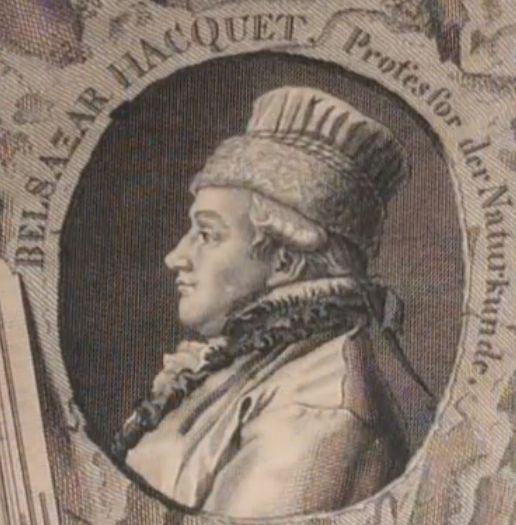
Hacquet was born around 1740 somewhere in France. He claimed aristocratic origins, but some historians suspect that he was actually born into a poor family. Even his place of birth is uncertain.
What is unquestionable is that Hacquet had a strong intellectual curiosity, which he displayed from an early age. A doctor by training, he first came to the Hapsburg lands as a military surgeon; he moved to the mining town of Idrija in modern-day Slovenia and then to Ljubljana. Wherever he lived, his thirst for knowledge guided him to conduct revolutionary scientific research of people and landscapes.
Hacquet was active in everything from geology and botany to ethnography. In Idrija, he spent much of his free time exploring and documenting the local mercury mine and the surrounding areas. He made the first attempt to summit Triglav, Slovenia’s highest mountain. He did not succeed, but his hikes in the mountains enabled him to describe new plant species, including an entire genus known as Hacquetia and a species of cave beetle.
A passionate collector of seeds, Hacquet became one of the leading botanists of the Alps. He also described the composition of rocks high above the timber line and was the first do identify dolomite as a distinct mineral. He was equally fascinated by Slovenia’s Karst plateau; his work there led to the emergence of modern karstology. While he was familiar with the latest scientific trends, he was also determined to blaze his own trail. And because he was familiar with both biology and geology, he became the first scientist to discover that the exact composition of minerals in the soil affected plant life on the surface.
Among other endeavors, he published a detailed mineralogical study of the Slovenian Lands, but he was just as interested in local people, who became the subject of one of the first ethnographic studies in the region. Among other things, he divided the Slovenian language into seven dialects. Meanwhile, many of his more tangible discoveries ended up in a curio cabinet that toured Europe and was reportedly even admired by the Pope.
Hacquet maintained close ties with other enlightenment figures in Slovenia and was a member of the Carniolan Agricultural Society, which brought together influential thinkers and researchers.
Hacquet eventually announced that he was tired of Slovenia and its people; he moved to Krakow, L’viv, and Vienna, where he died in 1815. But most of his research was conducted in the Slovenian Lands, and his meticulous work forever changed the scientific community’s understanding of the area’s nature and people.

































































